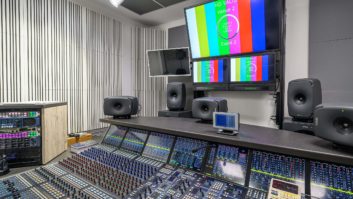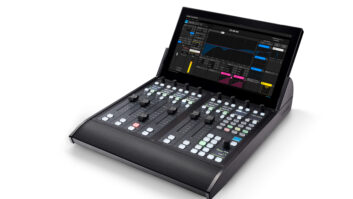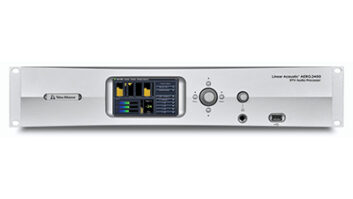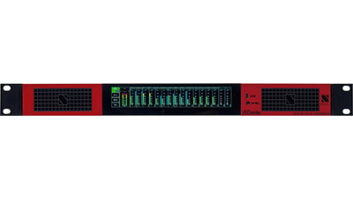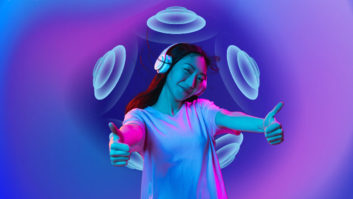While surround sound is now standard in home receivers the industry is casting its net toward new sonic systems, writes Adrian Pennington.
Driven by the need for audio to keep pace with higher resolution displays and immersive images, technologies capable of capturing and delivering up to 22.2 channels of sound are being investigated.
Stefan Meltzer, a technical consultant who represents the Fraunhofer IIS at DVB level, says there are different degrees of interest among European broadcasters about adding a third dimension to audio; “The big question is how to do it technically and also how many additional speakers will users accept,” he says.
Pieter Schillebeeckx, head of R&D at microphone developer Soundfield has met with broadcasters who have moved from SD to HD and 3D on the video side but “feel the audio has stagnated at 5.1 and they are asking, what next?” he says.
The 5.1 surround format has its limitations, the most obvious being reproduction of audio restricted to the horizontal plane. The 7.1 format adds two further channels in an attempt to improve the sense of envelopment in the horizontal plane, but again does not reproduce a sensation of height.
“There are problems with discrete channel formats such as 5.1, including the effect of non-standard speaker layouts at the user’s end which are beyond the control of the broadcaster,” says BBC R&D’s Chris Dunn.
Another disadvantage with current surround sound recording is compatibility with formats with a different number of channels. The 5.1 sound engineer may be required to check the downmix compatibility with mono and 2-channel stereo formats, and in future also check the upmix performance with 7.1, 22.2 and other future discrete channel surround formats. These compatibility checks are time consuming and require the sound engineer to maintain a multitude of replay hardware setups.
Dolby says 90% of existing HDTV sets are capable of Dolby Digital Plus (DD+), the next generation of its audio technology capable of providing channel configurations in 7.1, 9.1, even to 22.2. The latest DVB transmission systems include this capability by supporting DD+ or HE-AAC/AAC. The BBC, for example, is using AAC and HE-AAC for Freeview HD. AAC/HE-AAC supports in its bit stream up to 48 channels.
“It depends on how much spectrum you wish to take up with audio and how many speakers consumers want in their living room,” says Dolby Broadcast Marketing Manager James Caselton. “You get to 22.2 and it becomes a question of designing wires into the fabric of a house.”
“The greater issue is getting it to the home,” says Schillebeeckx. “We need MPEG or a Dolby or a DTS to devise a codec that will wrap up all this information for contribution. Then there are issues of backward compatibility with existing set-top boxes. The stumbling block is not the capture or mixing of audio, it is working through the pragmatic hurdles of legacy equipment, whether users want or can afford multiple speakers in their home, and even if they do is there any point if they are unable to arrange them correctly?”
An increasing number of features including Thor and Captain America: The First Avenger are being released with 7.1 audio. Dolby has outfitted 1,400 theatres worldwide with its 7.1 format while home theatre systems are also becoming 7.1 compliant.
However the expense to the home user — and to the broadcaster required to transmit multiple discrete channels of audio data as well as additional equipment to record it on — has led the BBC to research alternatives to channel-based surround formats, including Ambisonics and object-based approaches.
Fully immersive
Ambisonics, invented in the 1970s by Michael Gerzon, attempts to record, represent and reproduce a sound-field at a single point in space. As well as reproducing sound in the horizontal plane, Ambisonic systems have the advantage over surround formats in that they are also capable of reproducing the sensation of height, in principle offering a fully-immersive sound experience.
Another major advantage of the Ambisonic approach is the flexibility it allows in users’ speaker configuration. Unlike 5.1, the audio channels carried in an Ambisonic signal don’t map directly onto speakers. The number of speakers and the way they’ve been set-up by the listener are flexible and the same signal can be decoded to any speaker array.
According to BBC R&D Technologist Anthony Churnside in an online blog: “This flexibility would allow one common set of signals to be sent to everyone, and they would be able to decode it to suit their listening environment, regardless of the way they’ve chosen to set up their sound system. This has obvious advantages from an archival point of view, and unlike stereo, 5.1 and 7.1, keeping the Ambisonics recordings could potentially help future-proof the BBC sound archive.”
Ambisonic recordings require omnidirectional mics to capture width, height and depth information, and these are available from Soundfield (its DSF-2 is pictured) and others. Ambisonic recordings can be coded and transmitted using as few as four channels (so-called B-format).
“If Ambisonics can be made to work as a future format it could be considered an elegant and inexpensive means of reproducing immersive sound, compared to channel-based surround formats,” says Dunn.
Ambisonics does have problems though, including a tendency to restricted ‘sweet-spots’ in the listening area, and relatively expensive mics and recording equipment. BBC R&D’s work is focusing on the trade-offs between the technique’s advantages and limitations.
On a wave
Another option to discrete channel formats is being investigated at Fraunhofer IDMT. IOSONO is based on Wave Field Synthesis, which was originally devised in the mid-1980s at the Netherlands’ Delft Technical University.
The basic idea is to emulate sound sources and waves by using a ring of loudspeakers around the listening space. The level, position and distance of each sound source is recorded and processed separately from the acoustic characteristics of the room. Using this separation, it is possible to manipulate the source characteristics and the room information separately.
Playing 5.1 surround over Wave Field Synthesis is said to drastically enlarge the optimal listening area but the technology is mainly applicable to live events, multimedia installations, planetaria or virtual-reality-applications. For example, IONOSO is installed at Hollywood’s Mann Chinese 6 Theatre and Disney World.
“Fraunhofer IDMT and IOSONO are also looking at how sound reproduction in the home can be improved dependent on the reception device,” says Meltzer. “We want to avoid solutions where the audio is downmixed or upmixed because each time you are compromising quality.
“Instead of a channel-based representation, Wave Field Synthesis has an object-based approach which should make it easier to scale the reproduction of audio up or down according to the number of speakers in a home. This also has advantages for the broadcaster, since it only needs to produce and transmit one signal. Such a format would also be a future-proofed archiving format.”
This approach is also being taken by Dolby, which would optimise the audio performance for a listener online, on tablet or smartphone using headphones as well as for 5.1 surround sound listeners.
“The first step could mean delivering a virtualised surround sound experience to portable devices for listening through headphones but an experience scaleable to full 5.1 for home theatre,” reports Caselton. “Everything is possible, but we want to make sure that we take the audience with us. So we take a neutral approach and will licence our technology to whoever requires it.”
At the extreme of development, but nonetheless moving forward at pace, is NHK’s 22.2 multichannel sound system, which accompanies its ultra high definition video scheme Super Hi-Vision. The broadcaster next plans to test how to express 22.2 acoustic space in outdoor stadia and how much information is needed when collecting sounds at an outdoor sports venue.
The latest SHV advances will be presented at IBC and will include a presentation explaining how the launch of the last shuttle from Kennedy Space Centre was shot in SHV accompanied by 22.2 sound.
www.soundfield.com
www.bbc.co.uk/rd/
www.dolby.com
www.idmt.fraunhofer.de
